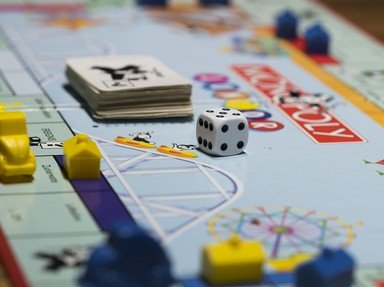Quiz Answer Key and Fun Facts
1. The brown group in the 1991 European Union edition of Monopoly (Strandvejen and Slotsgade) are two streets in which city that also contains the Grundtvig's Church?
2. The light blue properties are all situated in Brussels. Which of these streets is *NOT* one of the light blue properties in the 1991 European Union edition of Monopoly?
3. The light purple properties in the 1991 European Union edition of Monopoly come from three different cities. Which city has the Kalverstraat, the most expensive property in this set?
4. Which well-known street reserved for pedestrians, has given its name to the most expensive orange property in the European Union 1991 edition?
5. Which city has provided the red properties in the 1991 European Union edition?
6. The yellow properties come from two different cities in the same country: two from the capital, one from a fashionable city. Which city has the Via Monte Napoleone featured on the Monopoly board (in the 1991 European Union edition)?
7. The green properties in the 1991 European Union edition all are streets in the same city. Which of the following streets *IS* included?
8. The dark blue properties in the 1991 European Union edition of Monopoly, the most expensive on the game board, are the Königsallee and the Kurfürstendamm. In which city is the Kurfürstendamm (as well as the national token, the Brandenburg Gate)?
9. The 1991 European Union edition has four airports instead of railways. These airports belong to four countries that are not featured in the coloured property groups. Which airport is on top of the board, halfway between Free Parking and Go to Jail?
10. The 1991 European Union edition differs from other Monopoly versions in the properties depicted and some other ways. What is the layout for the dice?
Source: Author
JanIQ
This quiz was reviewed by FunTrivia editor
WesleyCrusher before going online.
Any errors found in FunTrivia content are routinely corrected through our feedback system.
